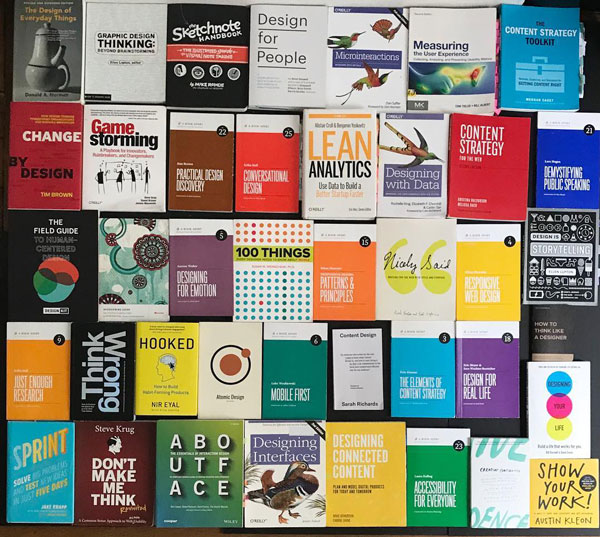So you want to get into UX...
My favorite definition of UX design is that it’s the science of the obvious (something I spotted Jared Spool quoted saying on Twitter). The irony of this definition is that UX, or user experience, is often so obvious that people completely ignore it, or feel that it’s not important at all.
Have you ever gone to open a door, there’s a handle where it looks like you should pull it, but really you have to push it? These doors that don’t open how the design of them suggests are referred to as “Norman doors” after Don Norman, the “father of UX design.” Don Norman’s foundational book, The Design of Everyday Things is considered the bible of all things UX. It also breaks down the principles that inform good experiences.
The first step to designing effective experiences is actually taking the time to talk to users, observe them, and deeply understand who you’re designing for. Otherwise, you’re designing for people based entirely off of assumptions. Research should not only happen at the beginning of a project, but throughout the process. Many companies claim to not have the time or budget for user research. But if you’re designing something that no one will use, the real question is how can you afford not to do research!? In the words of Jakob Nielsen, “you are not the user”.
When we talk about research in UX we’re not talking about rigorous academic research, we’re talking about gaining insights about the people you’re designing for in order to make informed design decisions. Erika Hall has a fantastic book called Just Enough Research. (You can also start with her devil or princess video on YouTube.) Steve Portigal also writes about conducting user interviews and distilling insights. (He shares user research war stories in this InVision design talk).
Usability testing is another fantastic, easy way to understand the way a user interacts with a product by giving them a task, and asking them to speak aloud as they go through the actions. (Spoiler alert: what you expect them to do isn’t always the reality.). Steve Krug’s book Don’t Make Me Think is a great resource for usability testing, and he even shares his scripts and resources online. “Guerrilla testing” is another approach to learn a lot about how a user is making their way through a flow or experience when you don’t have a lot of time or budget. Usability testing is a good way to confirm or deny that what you’ve designed is working as intended.
There’s so much more to informed UX design, from understanding the psychology, habits, and behaviors of users, to interpreting metrics and analytics, or having a content strategy that puts the user first. (Here are a few more definitions of what is UX.)
The most exciting thing about the field of UX is that it’s always evolving, and companies tend to be open about sharing their learnings. It means that a whole, the industry gets stronger and we can all learn from each other. Here are some of my favorite resources to help you get started (or provide some refreshers).
Don’t miss resources:
Nielsen Norman Group newsletter, articles, & YouTube channel
Jared Spool on Medium + UIE articles
UX Collective on Medium
DesignBetter.co resources from InVision
Favorite UX voices on Twitter:
Jared Spool (@jmspool)
Erica Hall (@mulegirl)
Dana Chisnel (@danachis)
Dan Brown (@brownorama)
Brad Frost (@brad_frost)
Mixed Methods (@mixedmthods)
Check out this Twitter list for more leaders in the field
UX podcasts:
Dollars to Donuts (user research)
Mixed Methods (UX research)
If you’re seriously looking into getting into UX, check out the UX Designer path and courses I created on OpenClassrooms. When you sign up for the diploma path, not only are there 10 real-world inspired projects to work through, but you get weekly mentor sessions to accompany you along the way.
For the record, the books in the top photo are (most of) the books I read as I created my UX courses. 🤓
Sign up for my newsletter exploring the intersection of travel, design, and creative entrepreneurship. You can also find me online at pret-a-voyager.com and on social media at @pretavoyager on Twitter and Instagram. I also offer UX consulting as part of my offerings.

